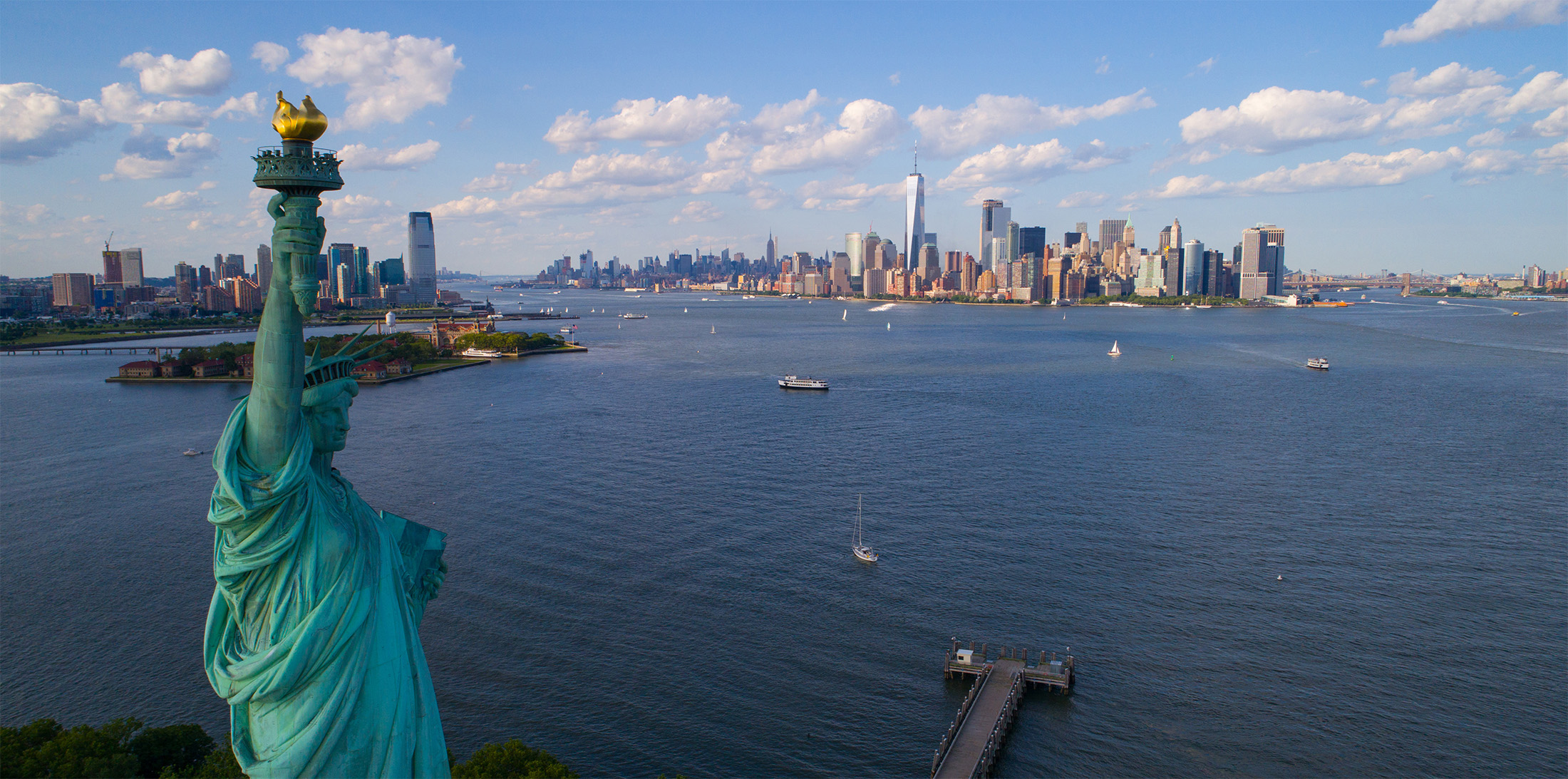
Getting a green card or permanent residence status is extremely complicated, especially for people who aren’t familiar with U.S. immigration law. Even the simplest of immigration rules that state whether a particular person is eligible to get a green card; have significant exceptions that may not apply in your situation.
Further, the paperwork that a green card applicant must produce to get a permanent residency is complex, and errors can easily result in delays or even the denial of your green card application. For this reason, it’s advisable for anyone that’s seeking a permanent residence to do so with the legal guidance of an experienced NYC green card attorney.
At the Law Office of Jason A. Dennis, our immigration lawyers are familiar with the legal options for immigration. As part of our immigration legal services, we can help you determine which visa is ideal for your situation. To schedule a free initial consultation, contact our immigration law firm today at (347) 868-6100.
Who is Able to Apply for a Green Card?
Applicants who qualify to apply for a United States green card due to familial status include:
- Immediate relatives of United States citizens, including:
- A spouse of a United States citizen
- Minor children of a US citizen
- A parent of a US citizen over the age of 21
United States citizens’ immediate family members qualify for the fastest green card application process. This process is typically resolved between 8-14 months after it is filed.
- Preference immigrants
Other relatives may may be fall into the “preference immigrant” group and qualify for a Green Card or permanent resident status. This group includes:
- Unmarried children of United States citizens who are over the age of 21;
- Dependent Children and spouses– all under 21, including daughters and sons of lawful permanent United States residents;
- Married children of United States citizens; and
- Siblings of United States citizens, especially if that US citizen is over the age of 21.
It’s essential to note that the application process for “preference immigrants” takes longer than for the immediate family members of U.S. citizens.
The waiting period for these categories varies but typically takes years. Once your petition is approved, there are two primary ways to apply for a green card in the US:
- From within the United States; and
- From abroad.
How to Apply for a Green Card If You’re Outside the U.S.
A person may apply for an immigration visa from their consulate or local U.S. Embassy in their country of origin. This Green Card application process is known as consular processing. The process comprises the following steps:
Get Your National Visa Center (NVC) Package
After your Green card petition is approved and you live outside the United States, the NVC will send you a package to your native country. The NVC package contains all required additional forms that you must fill out for your green card application.
Apply for a Visa
Next, visit the U.S. embassy in your country of birth to apply for a visa. Often, the NVC package contains detailed instructions on how to apply for a visa. Non-citizens applying for a family-based green card from outside the United States must file the DS-260 and DS-261 application forms.
- The DS-260 is also referred to as an immigrant visa application.
- The DS-261 is known as the online Choice of Address and Agent. It’s an online visa application form that notifies the State Department of how to communicate with you during the visa application process.
During this step, you’re also expected to have your visa interview with an embassy official. Further, you must also submit supporting documents.
Travel to the U.S.
Once your visa is approved, you’ll receive your NVC package, also known as the Visa packet, from the United States Embassy. Once you receive this package, you must travel to the United States and carry your arrival package unopened. Only a United States immigration official at a port of entry can open the arrival package and determine whether you’re allowed to enter the country.
However, it’s essential to note that just because you have an immigrant visa, it’s no guarantee that you’ll be allowed to enter the U.S. The immigration official has the discretion to decide if you can enter the country.
What is the Green Card Application Timeline in 2022?
After filing the Form I-485 or the Adjustment of Status form, you must follow the following steps:
Your Application is Received
This process takes place approximately 2 to 3 weeks after filing your application. If no errors were made with your adjustment of the status package and all form details have are properly filed, the U.S. Citizenship and Immigration Services (USCIS) will respond by sending you a letter confirming the receipt of your application.
If the Form I-485 and other related forms in your Adjustment of Status package weren’t properly filed, the USCIS will send you a Request for Evidence or Notice of Action. Sometimes, your application for adjustment of status may be rejected if you didn’t fill all the forms properly.
You Will Have to Attend a Biometrics Appointment
This process takes approximately 3 to 5 weeks after filing for adjustment of status application. After successfully receiving your application, the USCIS provides you with notice, which assigns your biometrics appointment date and specifies the location and exact time for the appointment. Often, biometric appointments are held at the nearest USCIS Application Support Center.
If you don’t appear at the biometrics appointment, it can negatively impact your application–unless you have a good reason for missing the appointment. By following the instructions provided in the biometrics appointment letter, you can request to reschedule your biometrics appointment.
This process takes approximately 4-6 weeks once you file your application. Green card applicants aged between 14-78 must appear at their biometrics appointment. The biometrics appointment is also called a biometrics screening and typically it lasts for 30 minutes. During the biometrics appointment, the United States Citizenship and Immigration Service may collect your signature, fingerprints, and photographs.
Employment Authorization Document (EAD)
This step takes about 3 to 6 months once you file your application. If your adjustment of status package is included in the Application for Employment Authorization (Form I-765), you’ll also receive an Employment Authorization Document (EAD).
You Receive Your Travel Document
It takes approximately 5 to 7 months to receive your travel documentation after filing your application. If Form I-131 or Application for Travel Document is included in your adjustment of status package, you’ll receive a travel document, which allows you to travel outside the U.S.
Adjustment of Status Interview
It takes 7 to 10 months after filing your application to receive notice of interview. Often, the U.S. Citizenship and Immigration Service may send you a notice requesting you to attend an adjustment of status interview as an immigrant and the petitioner.
It takes approximately 7 to 12 months to receive a request to attend an Adjustment of Status interview. It’s imperative to note that interviews are a normal part of the green card application process. So, be prepared in advance when you’re invited for an adjustment of status interview. The USCIS provides a basic checklist of documents required for the Adjustment of Status interview in your interview notice letter.
Granted Permanent Residence
To become a permanent resident, it takes nearly 8 to 14 months after filing. Sometimes, an immigrant may be granted permanent residence immediately after the AOS interview. Thus, often, adjustment of status applicants receive their green cards 8 to 14 months after filing their application. However, if your application for a green card is denied, the USCIS sends you with a notice outlining the reasons for the denial.
Sometimes, the USCIS can place a permanent residence applicant into removal proceedings after their green card application is denied. Prepare thoroughly for your green card application and it’s essential to understand all the risks associated with the denial of your permanent residence application. When you receive your green card, you no longer need the work permit card. Your status as a green card holder allows you to travel outside the U.S. and return with a valid green card. Also, the green card is a proof of your right to work in the U.S.
Contact a New York City Green Card Attorney Today to Discuss your Immigration Case
People who are seeking permanent resident status must always talk to an experienced attorney concerning their situations. Even in the most uncomplicated situations, the legal guidance of a New York immigration lawyer can make getting a green card as simple as possible. To schedule a free initial consultation with one of our experienced NYC immigration attorneys, call The Law Office of Jason A. Dennis today at (347) 868-6100.

